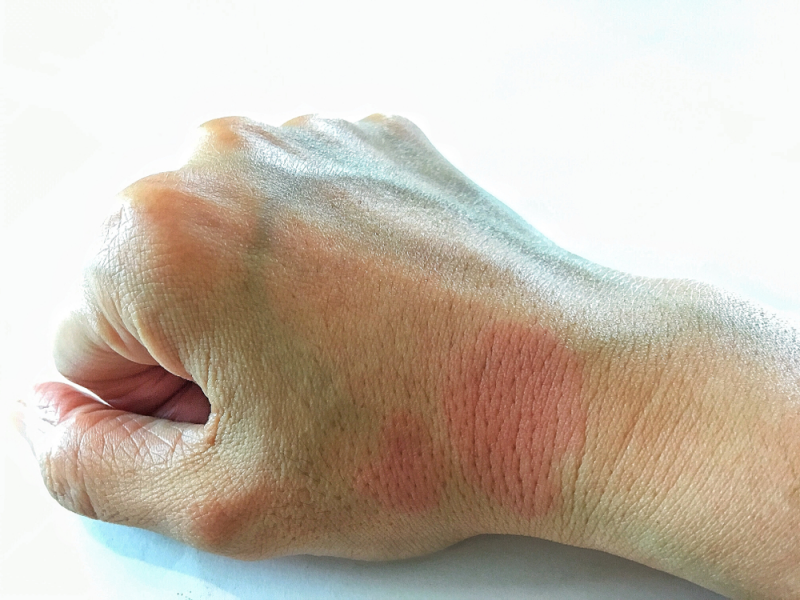- Lupus is an autoimmune condition that affects both men and women, though women are more commonly affected.
- Many signs of lupus are vague or could signify a range of issues.
- If you notice any of these symptoms, even if you think they’re nothing, bringing them up with your doctor is important because they can help discern whether it’s lupus, something else, or nothing at all.
Lupus is “autoimmune condition in which the body erroneously attacks its own tissues,” Dr. Stella Bard, a board-certified rheumatologist of Arthritis and Rheumatology Care, told INSIDER.
If you’re curious whether your subtle symptoms could actually be signs of lupus, you should know the common signs and symptoms associated with the disease.
Here are 10 subtle signs of lupus.
You’re extremely fatigued.

Fatigue is one common symptom associated with lupus, but the problem is, it’s also commonly associated with many other illnesses, which can sometimes make getting an accurate diagnosis difficult.
"The extreme exhaustion I experienced is often misdiagnosed as chronic fatigue syndrome," Karen Thurman, a gallery owner who has lupus herself, told INSIDER.
That means that fatigue, in and of itself, might not be enough to receive a lupus diagnosis.
You get unexplained headaches.

Headaches can also mean any number of different issues, and when you just get one out of the blue, you likely don't think that it indicates lupus. If you're getting regular headaches, however, it's definitely worth telling your doctor because it could point to the autoimmune condition.
"It typically peaks in the 20s and 30s," Bard said. "Lupus can be systemic, affecting multiple organ systems including the skin, or it can be more localized affecting the skin primarily." So if you're experiencing lots of headaches, it could be a form of lupus that's not localized to the skin, like neuropsychiatric lupus (NPSLE), neurocognitive dysfunction, or central nervous system lupus (CNS lupus).
You've gotten strange rashes on your skin.

One of the most notable signs of lupus is a so-called "butterfly rash."
"Very frequently patients with systemic lupus will present with acute cutaneous lupus, a photosensitive rash, most typically across the face and nose known as the classic 'butterfly rash,'" Bard told INSIDER. If you notice this sort of rash, you should definitely raise the subject with your doctor.
Your joints hurt, or are red or swollen.

"I had sore joints, which can be confused with wear and tear injuries, especially if (in my case) they're only a little red and swollen," Thurman said.
If your joints are red, swollen, or painful and you can't come up with any sort of explanation for what could've happened that would cause it, that might be worth chatting with your doctor about, because it could be a sign of an autoimmune condition, if not lupus, perhaps rheumatoid arthritis.
You have ulcers in your mouth.

You might not think that ulcers in your mouth would have anything to do with lupus or an autoimmune condition, but as it turns out, they could be an early sign that that's what's going on.
"It started with rashes on the skin and mouth ulcers," Sylvia Nasser, CPT, a group fitness instructor at Equinox and the founder of positive body movement #irockthesportsbra, who also has lupus, told INSIDER. "I went to a dermatologist and dentist thinking they were isolated conditions. Then my dermatologist raised concerns and sent me to a hematologist."
It's understandable that you might think that this is an isolated situation, but it could be linked to something bigger.
In fact, mouth sores (also referred to as oral lesions or ulcers) occur in approximately 40 to 50% of lupus patients and are one of the most common symptoms of lupus, according to Kaleidoscope Fighting Lupus.
Your eyes are pretty dry.

Though dry eyes aren't directly themselves a sign of lupus, they are a sign of Sjogren's Syndrome, which commonly occurs in conjunction with lupus.
Thurman said that she experienced dry eyes along with her lupus symptoms, which makes sense, as she was later diagnosed with both lupus and Sjogren's.
According to WebMD, about 50% of people who have Sjogren's Syndrome also have lupus or rheumatoid arthritis. And since so many of the symptoms overlap, that can make getting a definitive diagnosis quite difficult.
You're losing your hair.

"Many systemic lupus patients, about 85%, will also present with a variety of skin and hair manifestations," Stella Bard said. That means that if you're dealing with hair or skin issues that seem like they could be related to lupus, it could definitely be worth exploring further.
"Patients with discoid lupus, a form of chronic cutaneous lupus, present with inflamed coin-shaped plaques and ulcerations mostly on the face, ears, and scalp which lead to scarring and hair loss," Susan Bard added.
Nasser noted that she experienced hair loss before her diagnosis as well.
You have swelling in soft tissue areas of your body.

If you notice swelling in your body, that too could potentially mean that you have lupus. Dr. Bard said that if you experience swelling in your hands, feet, legs, or around your eyes, in particular, those could be signs of lupus. You may also notice some bloating, which Nasser said she experienced later on, prior to receiving an official diagnosis.
Your joints are stiff.

Like joint pain and swelling, joint stiffness can also be a sign of lupus.
Over the course of trying to figure out what she was dealing with, Nasser saw her symptoms get worse. "The symptoms had not subsided over months," she explained. "I began to go to different specialists to narrow down what my diagnosis could be. I decided to see a kidney doctor. By that time I had knee joint pain, hand joint pain, and finger stiffness. He referred me to a rheumatologist. He took all the necessary tests and saw that I met the markers for SLE."
The Lupus Foundation noted that Lupus arthritis causes pain, stiffness, swelling, tenderness, and warmth in your joints. Compared to rheumatoid arthritis, lupus arthritis is less disabling, however.
Your fingers change colors, getting red, white, or blue when you're cold.

The Lupus Foundation of America noted that experiencing a change of color in your fingers when you're cold, also known as Raynaud's phenomenon, is another potential symptom related to lupus. Thurman noted that she experienced this sort of symptom connected to her lupus diagnosis.
"Any of these symptoms should be brought to the attention of the physician," Susan Bard said. "It's the physician's role to distinguish the symptoms of lupus from other ailments. Particularly concerning symptoms such as shortness of breath, chest pain, and foamy urine should be evaluated immediately by a board-certified physician specialist."
Regardless of what you think might be causing any serious or long-lasting symptom, it's worth talking to your doctor about it. They're the one who will be able to help determine what might actually be causing it and though lupus can be tricky to diagnose, the sooner you know what you're up against, the sooner you can seek the treatment you may need.
Visit INSIDER's homepage for more.
